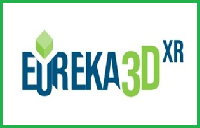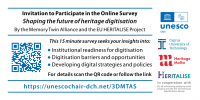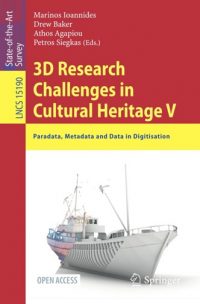-
Join the
Digital Meets Culture
Open Newsroom! If you have interesting news and events to point out in the field of digital cultural heritage, we are waiting for your contribution.
If you have interesting news and events to point out in the field of digital cultural heritage, we are waiting for your contribution.
-
Free text
-
-
Upcoming events
-
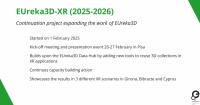 On the projects scope, results, and future plans
On the projects scope, results, and future plansDuring this year’s important event of Europeana Aggregators Forum (9-10 April 2025), Valentina Bachi from Photoconsortium delivered a presentation on both EUreka3D and EUreka3D-XR projects. The presentation went through EUreka3D project’s achievements with the developing of the EUreka3D Data … Continue reading →
 The collections feature 3D models digitised in the context of the EUreka3D project
The collections feature 3D models digitised in the context of the EUreka3D projectExplore two new source collections on Historiana, the online multimedia tool co-funded by the European Union that provides teachers with innovative, interactive resources to bring history to life and engage students. These collections feature 3D models digitised through the … Continue reading →
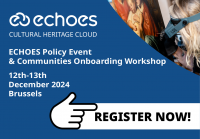 Brussels or online, December 12 - 13, 2024
Brussels or online, December 12 - 13, 2024The ECHOES Project Policy Event “Toward the Cultural Heritage Cloud” and the workshop “Onboarding communities into the Cultural Heritage Cloud” will take place in Brussels and online on 12 – 13 December 2024 and will officially launch the European Collaborative … Continue reading →
Topic: dch-rp

The need for novel more efficient and affordable solutions for digital preservation is increasing in the Social Science and Humanities. The workshop presented the advancements in the state of the art, to understand which could be the benefits offered, in particular to the Digital Cultural Heritage sector, by the new technologies and e-infrastructures. Continue reading

Sciencegateway.org organises a Science Gateway Institute workshop co-located with IEEE Cluster 2013 Conference. Papers will be co-publishing in a special issue of Concurrency and Computation, Practice and Experience (http://www.cc-pe.net/journalinfo/) together with selected papers presented at the International Workshop on Science Gateways 2013 (http://www.iwsg2013.org). Continue reading
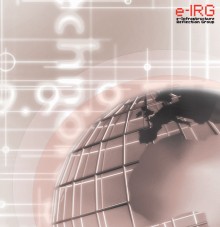
A flexible and dynamic ecosystem, providing integrated services through interoperable infrastructures. It should be open and accessible, and continuously adapting to the changing requirements of research and to new technological opportunities. Continue reading
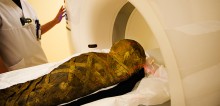
Medelhavsmuseet – the Museum of Mediterranean and Near Eastern Antiquities in Stockholm will digitally place human mummies on a virtual autopsy table. The work is taking place in advance of a new exhibition on Egypt, which is due to open in 2014. It will be possible to zoom into very high resolution to see details like carving marks on a sarcophagus, and the true colors of the mummy. The 3D model also allows to “unwrap” a mummy by peeling off virtual layers of the wrapping to explore the mummy itself and the artifacts that were buried with the body. Continue reading

The goal of the course, organised in 4 webinars, is to create the skills to integrate scientific applications in Science Gateways implemented with the Catania Science Gateway Framework. This will allow the creation of an intercontinental team of deveopers able to respond to requests of integration of specific applications from Virtual Research Communities all around the globe. Continue reading

TERENA and SURFnet has organized the second VAMP workshop on September 30th & October 1st, 2013 in Helsinki, Finland. Goal of VAMP2013 was to foster the deployment of identity management and collaboration tools within the research communities. The organisers invited … Continue reading
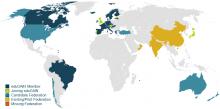
The DCH-RP e-Culture Science Gateway (eCSG) is a standard-based web 2.0 demonstrative platform to show the Proofs of Concepts (PoCs) identified by the DCH-RP project and how they fit with the requirements defined in the Roadmap. Continue reading
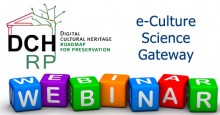
The general architecture of the DCH-RP e-Culture Science Gateway (e-CSG) and its web-based and mobile app implementations are the subjects ot this webinar which is organised by the DCH-RP project and also supported by the European Grid Infrastructure. Live demonstrations about how to access and use the e-CSG, both as end-user and repository manager, will be provided. Continue reading
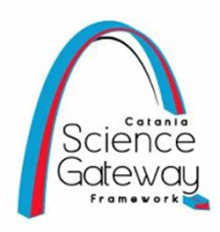
The general architecture of the Catania Science Gateway Framework and some of its implementations are the subjects of this webinar which is jointly organised and supported by CHAIN-REDS, eI4Africa and EGI-InSpire projects. At the webinar attended more than 30 international experts worldwide. Continue reading

Federated identity management (FIM) in general and federated identity management for research communities (FIM4R) is an arrangement that can be made among multiple organisations that lets subscribers use the same identification data to obtain access to the secured resources of all organisations in the group. Specifically in the various research communities there is an increased interest in a common approach to FIM as there is obviously a large potential for synergies. Continue reading








